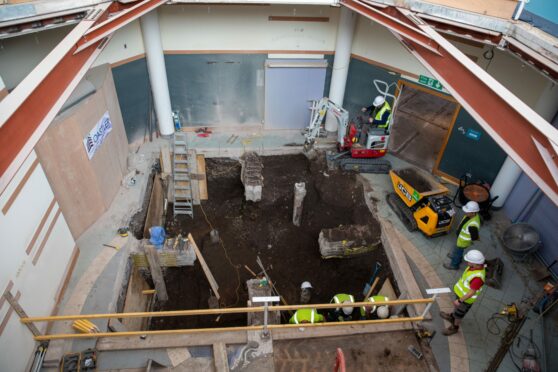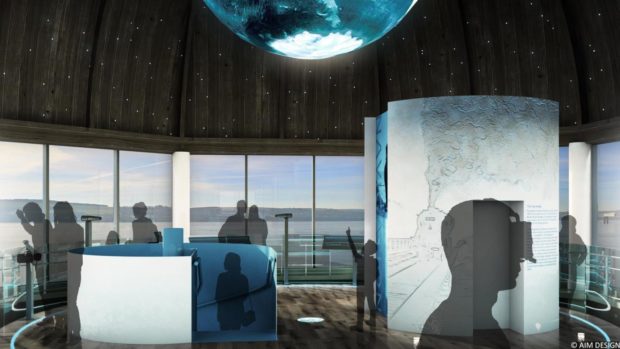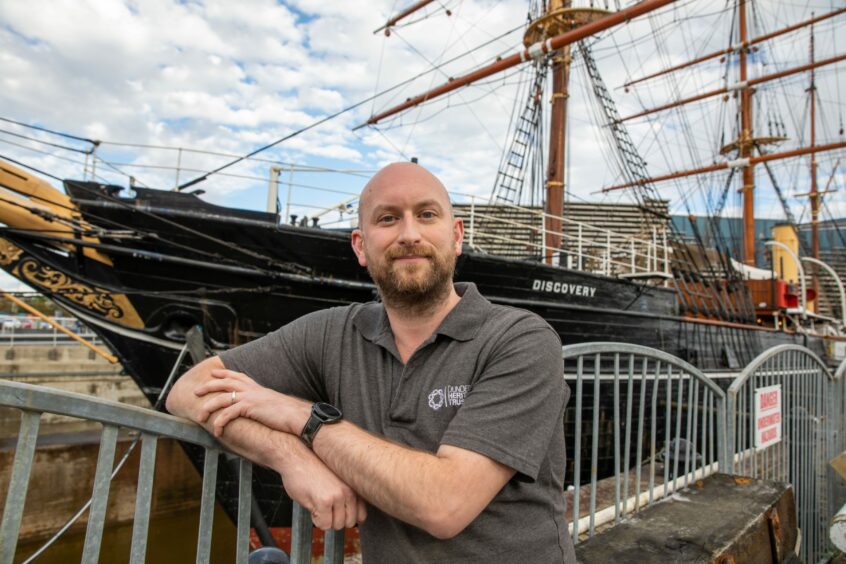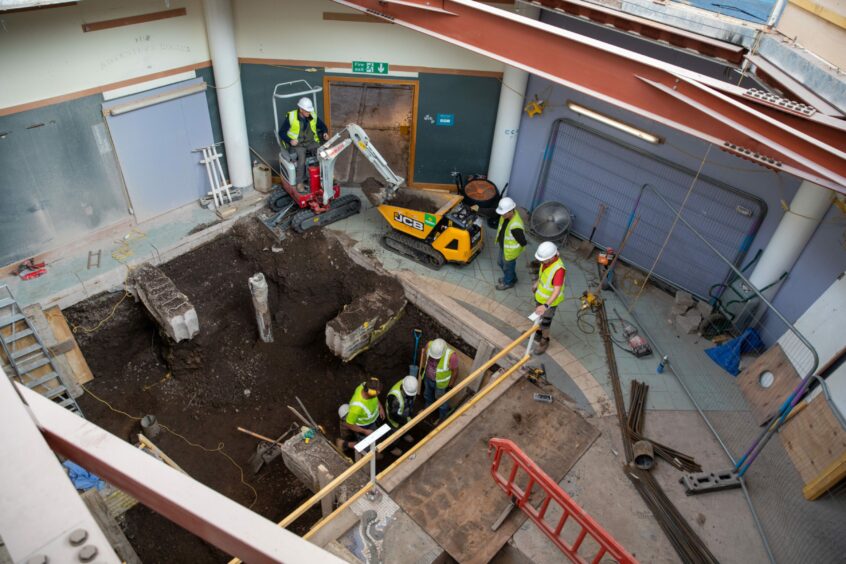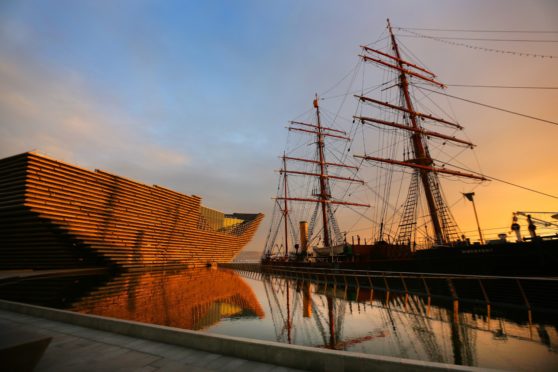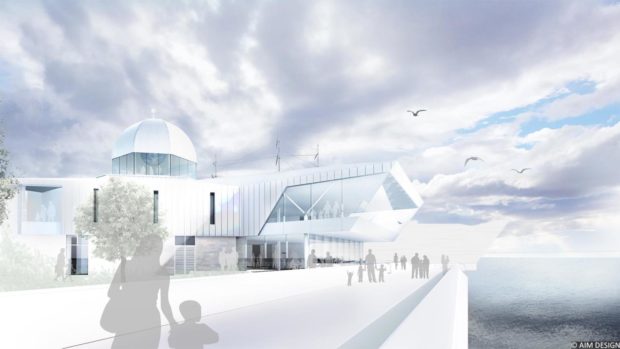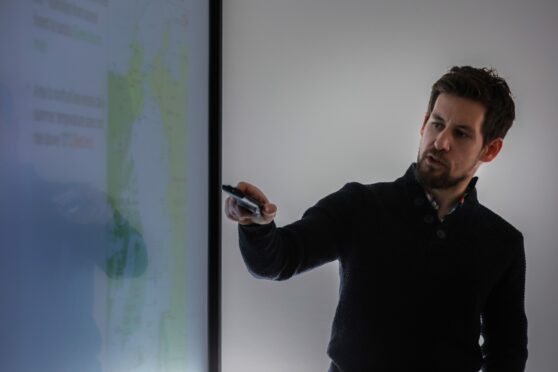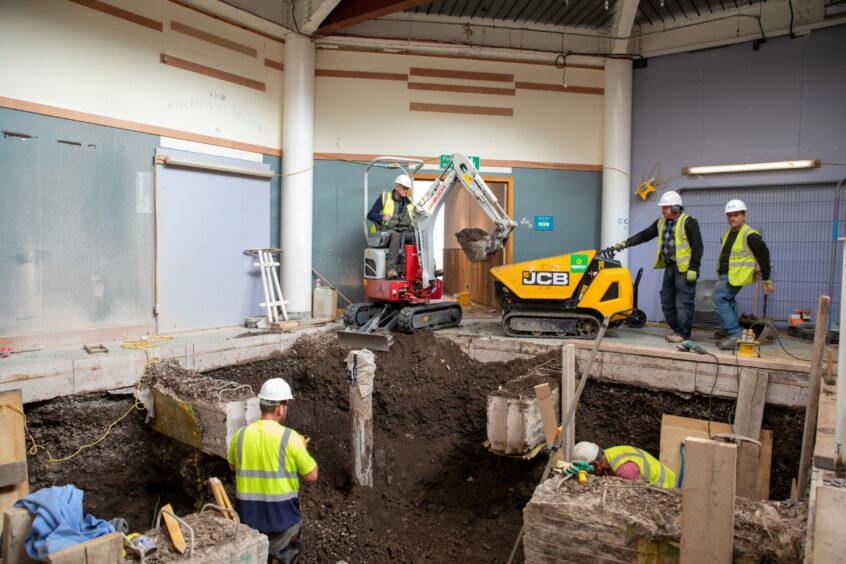Work has started on the biggest upgrade to Dundee’s Discovery Point visitor centre since it opened in 1993.
The popular attraction, which tells the story of RRS Discovery’s expedition to Antarctica in 1901, is getting a £12 million facelift.
Work on the Dundee-built ship itself will also be carried out to protect it from deterioration thanks to a £409,000 grant from the National Heritage Memorial Fund.
Dundee Dome Experience
The first stage of the project is now under way and has seen the floor of the building dug up, exposing part of the original Dundee Docks it was built on almost two decades ago.
It will see a lift installed giving access to a transformed roof space, named the Dundee Dome Experience.
It will give visitors a 15 to 20 minute show with 360° panoramic views of the city, Waterfront and River Tay and will feature Gaia, a piece by world-famous environmental artist, Luke Jerram.
The public will also notice an upgrade to the dated-looking reception area, which will be given an iceberg theme.
The building upgrades are scheduled for completion by spring 2022, possibly as early as February.
Ali Gellatly, manager of the Dundee Heritage Trust-run centre, says visitors will notice a huge difference as soon as they walk in the door.
He said: “It’s really shaping up to be something quite spectacular.
“It [the Dundee Dome Experience] will be a blackout so the only thing you will see is the Gaia, which is a large and illuminated rotating globe.
“You’ll walk up underneath Antarctica and a 360° show will be projected on to these blackout blinds, allowing you to see what Dundee was like in 1901.
“You’ll see the jute chimney stacks and all these things and at the end of the show, the blackout curtains will raise up and you then look out the windows to see Dundee as it looks now.
“It’s a really impressive thing that will really grab people.
“It’s a real big change and a huge addition that we’ve not even come close to before.”
Preservation work on RRS Discovery ‘essential’
The RRS Discovery is the world’s first to be designed specifically for scientific research and the sole survivor from the Heroic Age of Antarctic Exploration.
Specialist ship surveyors recently found the fabric has deteriorated, as is common with a wooden ship of her age, with previous repairs made possible through crowdfunding.
An estimated £1.3m of work is needed to prevent further damage and to secure her future as an internationally acclaimed visitor attraction.
The first phase of this will ensure it is watertight, repair the stanchions along the portside, and carry out crucial repairs to badly degraded timbers in the ship’s stern.
Work will begin at the tail end of this year.
Jim Pettigrew, chairman of Dundee Heritage Trust said: “RRS Discovery is the pride of Dundee and the jewel in the crown of our historic waterfront, which is now a major tourist destination attracting visitors from around the globe.
“This essential conservation work is also an important step towards our £12m plans to redevelop Discovery Point, with a major fundraising campaign taking place to secure the remaining investment needed to make this possible.”
Dr Simon Thurley, chairman of the National Heritage Memorial Fund, said the body is “delighted” to support the effort.
Ship has ‘unique’ position in climate change research
The news comes as the United Nations Climate Change Conference (Cop26), which is being held in Glasgow, fast approaches.
Dundee University’s Dr Simon Cook, an expert in geographical and environmental science, said the research carried out on board is still used by scientists today.
He said: “As the world’s first scientific research ship, RRS Discovery occupies a unique position in the history of climate change science.
“It is very fitting that this funding is being announced as Scotland prepares to host COP26, 100 years after Captain Scott and his crew first ventured to the uncharted Antarctic wilderness, setting a benchmark for scientific discovery that is still important to this day.
“Today, satellites are one of the most important tools for learning about climate change in Antarctica, but we lack data from before the advent of satellite technology.
“Observations made in the RRS Discovery’s ship logs about sea ice extent, for example, are still being used today to understand longer term changes in ice cover and the climate of this region.”
The second phase of upgrading the building will be carried out at a later date, once all the cash needed is secured with hopes this will be completed by 2025/26.
